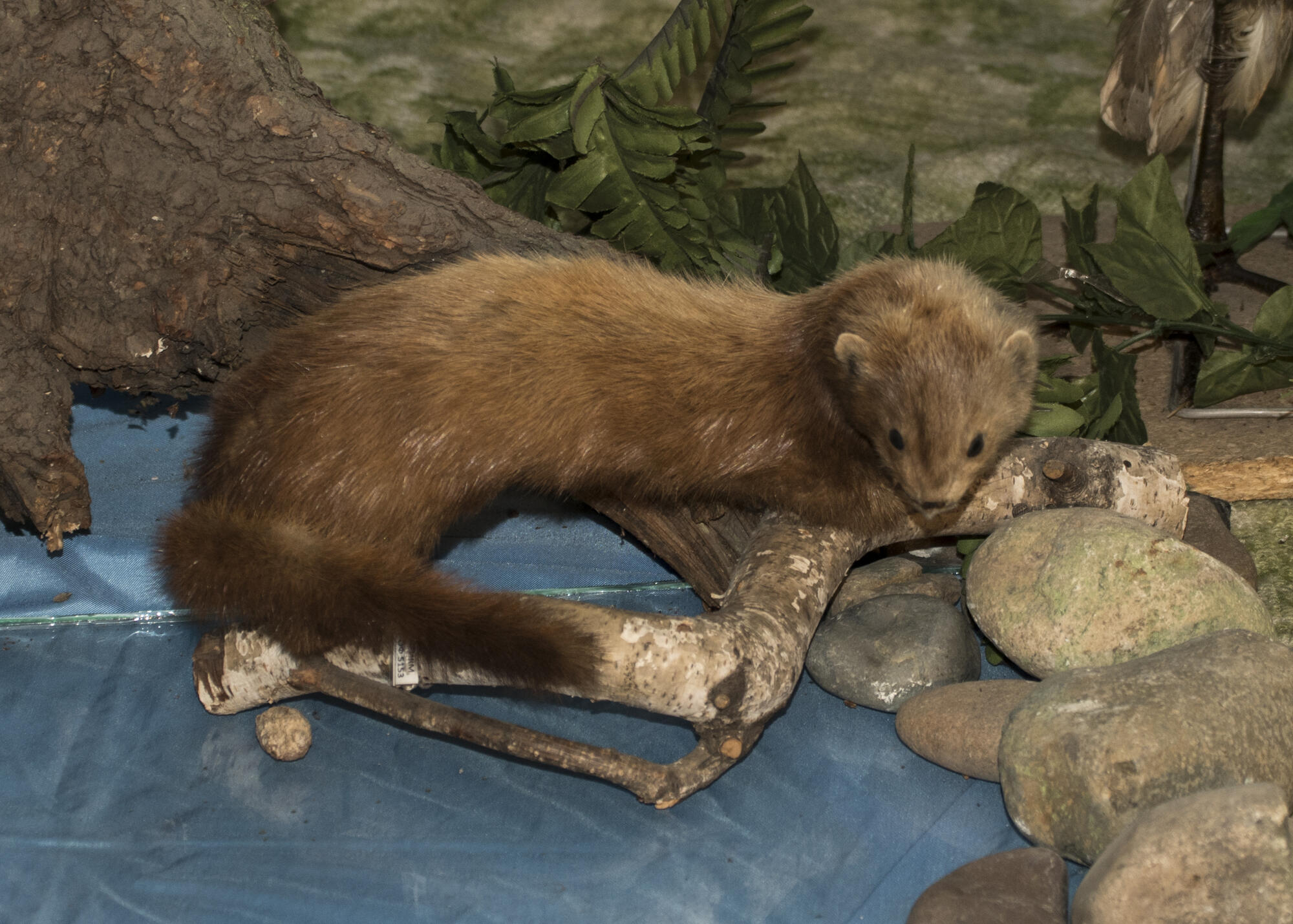The European mink is a fairly small animal with a smooth, mainly chestnut-colored, coat. It is a highly valued member of the Mustelidae family, and a carnivorous mammal. The animal is a close ‘relative’ of common weasels, European polecats as well as stoats. The length of its body does not exceed fifty centimeters. The creature has got a relatively small but very bushy tail, whose length ranges from twelve to nineteen centimeters. Its weight is no more than 800 grams. Owing to its size, in the wild, the Eurasian mink can get into various crevices, quickly hide whenever danger arises and stay afloat easily.
The small predator has a very beautiful dense coat with a thick underfur. The latter stops this animal from getting wet even if it remains in the water for a long time.
The Russian mink’s daily diet may consist of rodents, fish, crustaceans, semi-aquatic creatures and insects. When these predators live near settlements, they sneak into barns and hen-houses, and skillfully catch domestic poultry.
Eurasian minks prefer eating fresh food. If it is not available, they can even go hungry but for no more than 4 days. One may quite often spot these animals up in the trees. They can feast on birds’ eggs up there. European minks primarily live in forests and fairly close to water bodies, i.e. rivers, ponds, lakes, etc. They prefer to inhabit, breed and hunt in relatively small territories.
These animals build their nesting chambers in dense reeds and bushes. The mammals either make their own burrows or use existing holes in the ground, i.e. natural depressions in the soil, small crevices, abandoned rats’ burrows or tree hollows. The Russian mink’s den remains in continuous use. It can abandon its home only for tow reasons: due to flooding or the absence of food during the winter season. Its burrow is not usually large but it is divided into several sections. There is a main area for sleeping, a toilet and several exits. One of them always leads to a water source, another into brushwood. This animal’s burrow is lined with available natural materials, such as feathers, moss, leaves and dry grass.
Eurasian minks are especially active when it is dark. However, if their hunt at night is unsuccessful, these animals can give it another go in the daytime. By nature, they are unfriendly but not aggressive. These mammals prefer to lead solitary lifestyles. The small predators live up to 10 years of age, maximum. However, in captivity, their lifespans are much longer, i.e. more than 15 years. Their natural enemies can be said to include predators such as lynxes, bears, wolves, Eurasian otters, owls, hawks and Eurasian eagle-owls. At present, the only reason European minks are not hunted extensively is because they are bred on special farms for their fur these days. This animal has been on the Red List of Threatened Species since 1996.
The small predator has a very beautiful dense coat with a thick underfur. The latter stops this animal from getting wet even if it remains in the water for a long time.
The Russian mink’s daily diet may consist of rodents, fish, crustaceans, semi-aquatic creatures and insects. When these predators live near settlements, they sneak into barns and hen-houses, and skillfully catch domestic poultry.
Eurasian minks prefer eating fresh food. If it is not available, they can even go hungry but for no more than 4 days. One may quite often spot these animals up in the trees. They can feast on birds’ eggs up there. European minks primarily live in forests and fairly close to water bodies, i.e. rivers, ponds, lakes, etc. They prefer to inhabit, breed and hunt in relatively small territories.
These animals build their nesting chambers in dense reeds and bushes. The mammals either make their own burrows or use existing holes in the ground, i.e. natural depressions in the soil, small crevices, abandoned rats’ burrows or tree hollows. The Russian mink’s den remains in continuous use. It can abandon its home only for tow reasons: due to flooding or the absence of food during the winter season. Its burrow is not usually large but it is divided into several sections. There is a main area for sleeping, a toilet and several exits. One of them always leads to a water source, another into brushwood. This animal’s burrow is lined with available natural materials, such as feathers, moss, leaves and dry grass.
Eurasian minks are especially active when it is dark. However, if their hunt at night is unsuccessful, these animals can give it another go in the daytime. By nature, they are unfriendly but not aggressive. These mammals prefer to lead solitary lifestyles. The small predators live up to 10 years of age, maximum. However, in captivity, their lifespans are much longer, i.e. more than 15 years. Their natural enemies can be said to include predators such as lynxes, bears, wolves, Eurasian otters, owls, hawks and Eurasian eagle-owls. At present, the only reason European minks are not hunted extensively is because they are bred on special farms for their fur these days. This animal has been on the Red List of Threatened Species since 1996.



